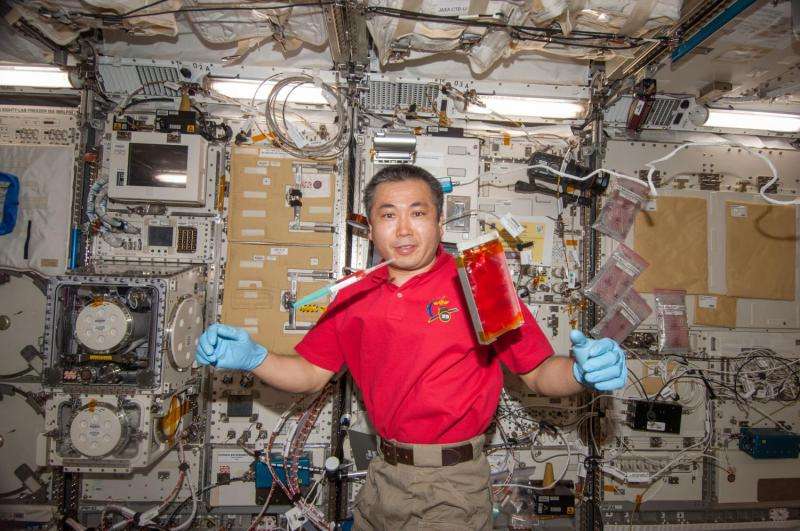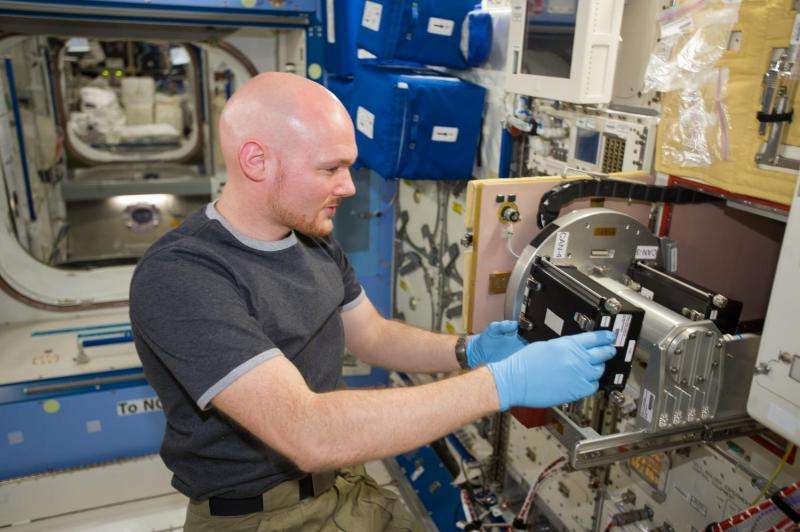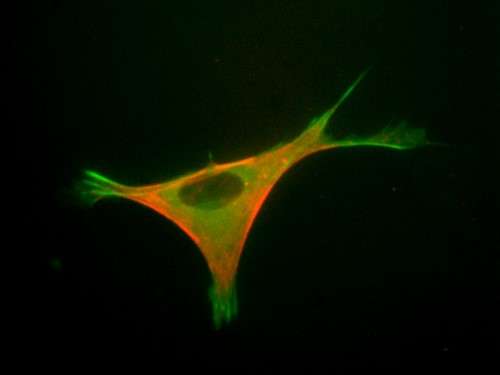Learning how muscle cells feel the pull of gravity

People can easily feel the presence - or absence - of gravity. Our individual cells actually may be able to sense gravity, too, and that ability could play a role in the loss of muscle that occurs when humans spend time in space. An investigation on the International Space Station to learn more about exactly how cells sense gravity could help scientists figure out ways to prevent that muscle loss, in space and on Earth.
Skeletal muscle cells are particularly sensitive to mechanical stress, or load, which is why exercise stimulates the growth of these muscles. This sensitivity could also explain why microgravity causes muscles to atrophy, or waste away. Previous research suggests that skeletal muscle cells have unique ways of detecting mechanical stress. Scientists believe that the lack of mechanical stress on cells from gravity may decrease tension in the cell membrane and affect the expression of key proteins and genes, ultimately leading to muscle atrophy.
The mechanisms by which this happens aren't yet understood, though, and the Japan Aerospace Exploration Agency's (JAXA) Cell Mechanosensing investigation seeks to change that.
Principal investigator Masahiro Sokabe, PhD, professor at Nagoya University Graduate School of Medicine in Japan, explains one possible mechanism: that cells sense gravity using mitochondria, a relatively heavy body inside our cells.
"Microgravity causes weight loss in mitochondria," Sokabe says, "which decreases the tension in fibers connected to the cell membrane and reduces activity in channels that move calcium ions across the cell membrane." Together, the decreased concentration of calcium in the cell and thinning of stress fibers could be the cause of loss of muscle.
To test whether this is what happens, researchers are using fluorescent markers in mouse and rat cells (specifically mouse stem cells or MSCs and rat myoblast L6 cells), which thrive under microgravity conditions, reports co-investigator Takeshi Nikawa of Tokushima University. These cells will be attached to extracellular matrices which are mesh-like structures made up of molecules that cells secrete to provide them with structural and biochemical support. Matrices with different rigidities will create varying tensions in the stress fibers and cell membranes to simulate mechanical loads, including that of gravity, experienced by cells on earth.

Loss of muscle strength and tone, and resulting difficulty with physical activity following return to Earth, are long-standing challenges of extended space travel. Astronauts who travel to Mars, for example, will need to be physically active almost immediately upon arrival on that planet. On Earth, muscle loss results from extended bed rest or inactivity due to age, illness or surgery, as well as some forms of muscular dystrophy.
Understanding the mechanical and chemical changes in cell functions that cause muscle atrophy, and the role that gravity plays, will help researchers develop therapeutic approaches to inhibit those changes and, ultimately, help prevent muscle loss.

This is the third stage of the experiment to launch to the station. The first applied various drugs to rat and mouse cells cultured in the Cell Biology Experiment Facility (CBEF) in the space station's Kibo module. Those cells were treated with chemicals to preserve genetic material and frozen for return to Earth. The second stage looked at the effect of microgravity on cell migration, the structure of stress fiber, and mitochondria at room temperature. For this experiment, live cells will be kept in a new, temperature-controlled chamber in Kibo, observed with a fluorescent microscope, then chemically fixed and refrigerated for return to Earth.
By figuring out how our cells "feel" gravity, this investigation could help finally determine why and how muscles waste away in space. That may leave people in space and on Earth feeling a lot stronger.
Provided by NASA




















